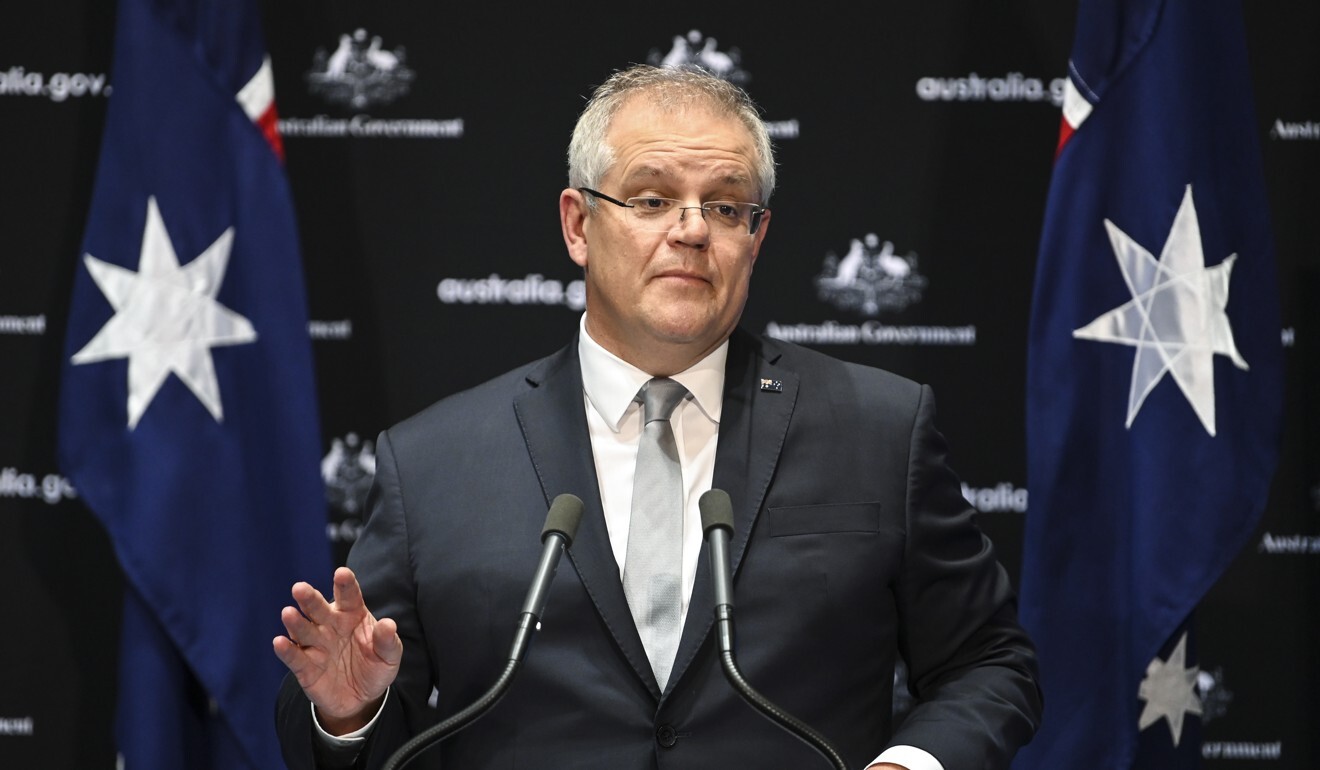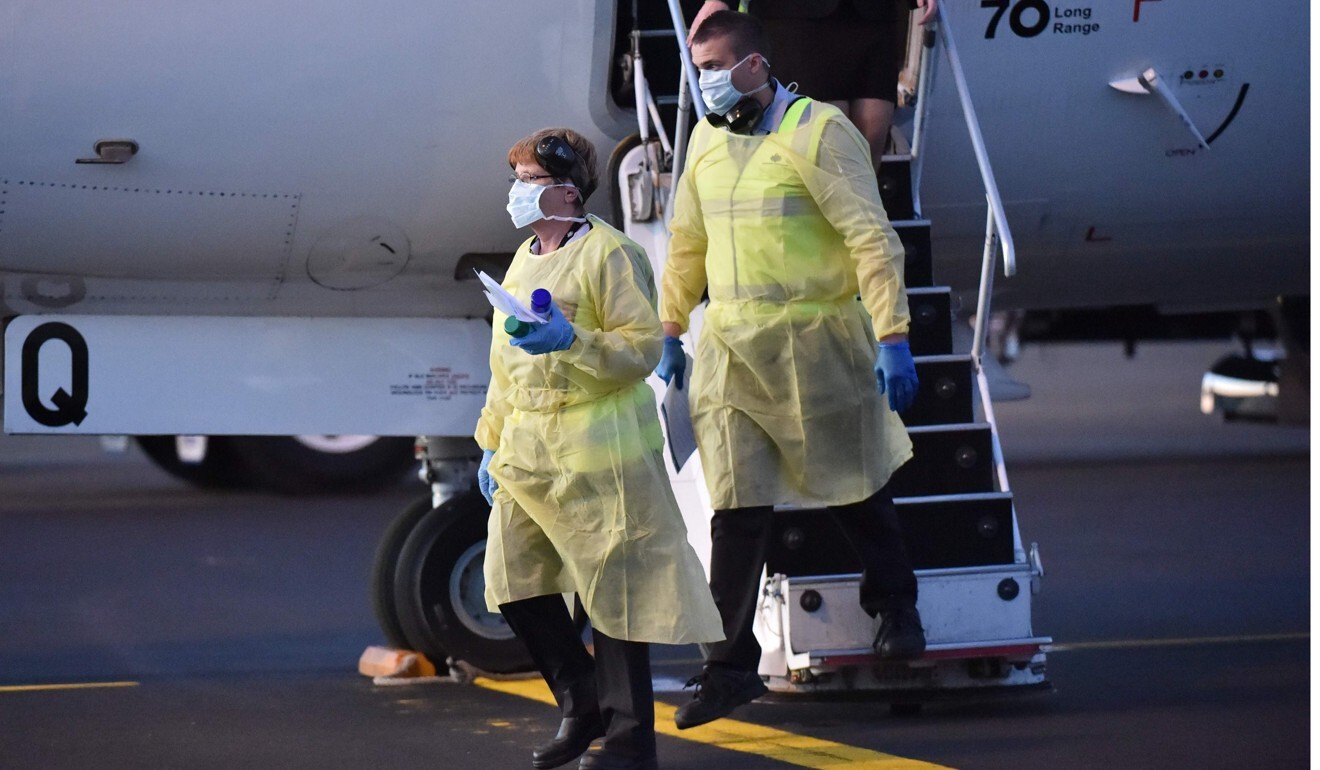
New Zealand, Australia discuss coronavirus ‘travel bubble’ to allow two-way movement
- New Zealand Prime Minister Jacinda Ardern said she will take part in a meeting of Australia’s emergency coronavirus cabinet on Tuesday
- Australia, which launched a contact tracing app last week, reported 26 new Covid-19 cases on Monday, while New Zealand recorded no new cases

Australia and New Zealand are discussing the potential creation of a “travel bubble” between the two countries, officials said on Monday, even as Australia reported its highest number of coronavirus cases in two weeks.
New Zealand Prime Minister Jacinda Ardern will take part in a meeting of Australia’s emergency coronavirus cabinet on Tuesday, stoking speculation that bilateral coronavirus travel bans could be lifted and two-way travel could be permitted in the near future.
“The meeting will discuss a number of matters relating to the Covid response on both sides of the Tasman [Sea], including the creation of a trans-Tasman travel bubble,” she told reporters on Monday, describing her presence at the meeting as unprecedented.

“Both our countries’ strong record on fighting the virus has placed us in the enviable position of being able to plan the next stage in our economic rebuild.”
Ardern said the two-week quarantine periods both Australia and New Zealand currently impose on international arrivals would be mutually waived under the proposal.
She was reluctant to speculate on when it could take effect but warned: “Don’t expect this to happen in a couple of weeks time. We need to ensure that we’re locking in the gains that all New Zealanders have helped us achieve and make sure we have health precautions in place to make sure we do this safely.”
Ardern confirmed the meeting will discuss the countries’ respective approaches to battling the novel coronavirus, including contact tracing apps such as Australia’s COVIDSafe.
“We continue to do work in this space, but we are not relying on it because there is simply no silver bullet here,” she said.

Australian Prime Minister Scott Morrison said last week that the “only exception” to an international travel ban was “potentially with New Zealand, and we have had some good discussions about that”.
However, some state borders still closed in Australia would likely need to be reopened before the two countries could allow free movement.
“The idea of a bubble with Australia was floated two weeks ago, and this is an example of the sort of action that could happen within it, while always ensuring the protection of public health,” New Zealand Foreign Minister Winston Peters said in a statement.
“Officials in both countries are considering all aspects of the trans-Tasman concept, and planning how this could happen more broadly,” Peters added.
“Australia and New Zealand are two of the most integrated economies in the world,” he said.

The prospect of two-way travel was first proposed by Peters, though Ardern in April insisted it was a “long-term goal”.
Ardern was cautious about the prospect of allowing Pacific island nations which are free of Covid-19 into the bubble due to the inability of their health systems to deal with even a minor outbreak of the virus.
“That’s a conversation we’d need to have directly with them,” she said. “There’s a huge risk if Covid finds its way into Pacific island nations that are currently untouched.”
Australia and New Zealand have both slowed the spread of coronavirus in recent weeks to levels significantly below the those reported in the United States, Britain and Europe. Both governments attribute their success to social distancing restrictions and widespread testing.
However, Australia on Monday reported 26 new cases, including a seven-year-old boy, its biggest daily jump in two weeks. That could rise as more states report throughout the day. New Zealand recorded no new cases on Monday for the first time since March 16.
Overall, Australia has recorded around 6,800 infections and 95 deaths, and New Zealand 1,137 cases and 20 fatalities.
On Sunday, a New Zealand rugby league team arrived in Australia to self-isolate before joining Australia’s tournament later this month. The team received special permission, a move that Peters said could pave the way for a trans-Tasman bubble.
Ardern and Morrison are expected to discuss their strategies to slow the spread of coronavirus at Tuesday’s meeting, one source familiar with the details of the meeting said.
New Zealand does not have a contact tracing app like the one launched by Australia last week to find and inform people who have been in contact with confirmed infected people.
Just over 4 million Australians have downloaded the COVIDSafe app so far, well short of Morrison’s previously announced target of 40 per cent of the country’s estimated 16 million smartphone owners.
Morrison has made wider adoption of the app a prerequisite to further ease strict social distancing regulations in Australia.

The rise in Australia’s death toll was largely due to an outbreak at a meat processing plant in the state of Victoria.
The infection of the seven-year-old boy in New South Wales (NSW) state, which closed his Sydney school, has drawn attention to the contentious question of whether children should attend school during the outbreak.
The federal government has said schools should stay open since children are low-risk carriers of the virus, while some state governments have urged parents to keep children at home.
NSW will reopen schools on a staggered basis from next week, while Victoria has asked parents to keep children at home until the middle of the year.
The states and territories are also moving at different speeds to lift movement restrictions: NSW has allowed people to make house visits in groups of up to two, while Victoria is retaining its stay-home order until at least May 11.
“This is a struggle and … it’s not easy to live this way, but none of us can assume, just because we’re frustrated, that this is over,” Victorian Premier Daniel Andrews told reporters on Monday. “This is far from over. We have to stay the course.”